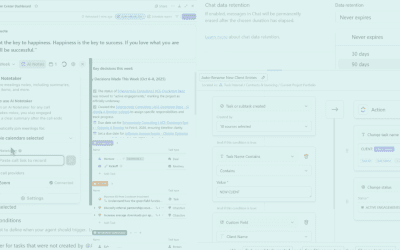
Summary: In the complex ecosystem of corporate hierarchies, project managers often find themselves in a uniquely challenging position. Situated at the intersection of executive vision and practical implementation, they must navigate the intricate web of C-suite, VP, and director-level politics while keeping projects on track. For those who grew up as middle children in challenging family dynamics, particularly with narcissistic parents, this terrain might feel eerily familiar – and surprisingly, the emotional intelligence developed in such environments can become your greatest professional asset.
This article is part of the Small Business Project Management Mini-Series. Be sure to subscribe if you don’t already so that you don’t miss any of these insights from top small business project managers.
The Middle Child Advantage: Emotional Intelligence Forged in the Family Crucible
Middle children often develop a specific set of skills that prove invaluable in corporate settings. Positioned between older and younger siblings, they become natural mediators, diplomatic bridges between competing interests, and keen observers of power dynamics. Add narcissistic parents to this equation, and these abilities become even more refined through necessity.
Growing up with narcissistic parents teaches you to:
- Read emotional undercurrents with remarkable precision
- Anticipate needs before they’re verbalized
- Navigate shifting expectations and moving goalposts
- Maintain composure in emotionally charged situations
- Identify genuine priorities beneath layers of posturing
These aren’t just survival skills; they’re the foundation of exceptional emotional intelligence in professional settings. As a project manager, this translates to an almost intuitive ability to sense when a VP’s enthusiasm masks underlying concerns or when a director’s brief comments contain unspoken expectations.
The Observer’s Advantage: Third-Person Perspective Without Judgment
One of the most powerful tools in navigating executive politics is the ability to observe behavior from a third-person perspective without falling into the trap of judgment. This skill—often developed by children in challenging family systems—allows you to:
- Separate behavior from intent: Executives may exhibit difficult behaviors that stem from pressures you can’t see. Observing without judgment allows you to respond to the behavior while understanding it may not be personal.
- Identify patterns objectively: When you remove judgment from observation, patterns emerge more clearly. You might notice that your CTO always becomes resistant before quarterly reviews or that your marketing director needs excessive reassurance when presenting to the board.
- Depersonalize conflict: Third-person observation helps you recognize when you’re being triangulated into executive conflicts, allowing you to maintain neutrality while facilitating resolution.
This perspective doesn’t mean becoming emotionally detached. Rather, it’s about maintaining emotional awareness while creating enough distance to remain effective. When a C-suite meeting becomes tense, your ability to mentally step back and observe the dynamics at play—without labeling anyone as “difficult” or “unreasonable”—becomes invaluable.
Childhood Wounds in the Boardroom: Understanding the Executive Psychology
Corporate environments, particularly at higher levels, often become stages where childhood wounds and adaptation strategies play out in subtle but impactful ways. Understanding these patterns can transform how you navigate executive relationships:
The Pursuit of Validation
Executives who received conditional love as children often demonstrate an insatiable need for validation. The VP who requires excessive praise for routine decisions or the director who can’t tolerate constructive feedback likely carries wounds related to worthiness. As a project manager, recognizing this pattern allows you to:
- Proactively acknowledge contributions
- Frame feedback within affirmations
- Understand that perfectionism often masks fear of rejection
Control as Safety
Leaders who experienced unpredictability or powerlessness in childhood frequently develop strong needs for control. The micromanaging C-suite executive or the VP who insists on unnecessary reporting structures isn’t simply being difficult—they’re unconsciously creating safety through control. Effective strategies include:
- Providing information before it’s requested
- Creating clear, predictable structures
- Acknowledging their expertise while gently expanding autonomy
The Fear of Abandonment
Surprising as it may seem, many high-level executives carry deep fears of abandonment that manifest as:
- Difficulty delegating important tasks
- Creating unnecessary urgency
- Resistance to team members’ growth or advancement
By recognizing these patterns without judgment, you can implement supportive structures that address the underlying need while maintaining project integrity.
Practical Applications: Turning Insight Into Influence
Understanding the psychological underpinnings of executive behavior creates opportunities for more effective project management. Here’s how to apply these insights in practical scenarios:
Scenario 1: The Resistant Executive Sponsor
When an executive sponsor suddenly becomes resistant to a project they previously championed, look deeper. This resistance often emerges when:
- The project threatens their sense of control
- They fear being outshined by its success
- The initiative activates imposter syndrome
Middle-child strategy: Create alliance through acknowledgment and inclusion. Privately consult them on a “challenging aspect” of the project, reinforcing their importance to its success.
Scenario 2: Cross-Departmental Conflict
When directors from different departments engage in territorial conflicts that threaten project timelines:
Third-person observation technique: Notice how the conflict likely stems from resource scarcity or recognition fears rather than the stated issues. Address these underlying concerns directly but discreetly.
Scenario 3: The Seemingly Irrational Priority Shift
When C-suite executives suddenly shift priorities without apparent reason, childhood-wound awareness suggests examining:
- Recent board interactions
- Competitive announcements
- Changes in peer executives’ status
Response strategy: Frame adaptations as strategic pivots rather than disruptions, acknowledging the wisdom in the shift while efficiently reorganizing resources.
The Ethics of Psychological Insight
With great insight comes great responsibility. Understanding the psychological underpinnings of executive behavior isn’t about manipulation—it’s about creating psychological safety and effectiveness. Ethical application means:
- Using insights to facilitate success for all parties
- Creating environments where childhood adaptations become less necessary
- Recognizing and respecting your own triggers and patterns
- Maintaining appropriate boundaries despite the pull to rescue or fix
Cultivating Your Middle-Child Superpowers
The emotional intelligence that middle children develop, particularly those from challenging family systems, isn’t static. It can be consciously cultivated:
- Practice conscious observation: Set aside time each week to observe workplace dynamics without judgment, noting patterns and underlying needs.
- Develop self-awareness: Identify your own triggers and how they connect to childhood experiences, particularly around authority figures.
- Refine your adaptation skills: Consciously expand your repertoire of responses to challenging situations rather than defaulting to childhood coping mechanisms.
- Establish clearinghouses: Create trusted relationships outside your organization where you can process complex emotional dynamics safely.
Conclusion: The Unexpected Advantage
What once may have felt like a burden—navigating complex family dynamics as a middle child with narcissistic parents—can transform into your greatest professional asset. The emotional intelligence, observational skills, and psychological insight developed through those experiences equip you uniquely for the intricate dance of corporate politics.
As a project manager working with executives, these capabilities allow you to create psychological safety, anticipate challenges before they emerge, and transform potential conflicts into productive collaboration. By observing without judgment, understanding the childhood wounds that drive adult behavior, and applying your middle-child diplomacy skills strategically, you can navigate executive politics with unprecedented effectiveness.
The path that made you sensitive to others’ needs, adaptive to changing expectations, and perceptive of unspoken dynamics has prepared you perfectly for the complex challenge of managing projects in the midst of executive politics. In embracing this unexpected advantage, you transform past challenges into the foundation of exceptional leadership.

Jessica Caresse White
Project Management Consultant
Jessica Caresse White (she/her), PMP, CSM, has been a Senior Project Manager with Tuck Consulting Group since May 2024. She is also the Managing Director of J. Caresse & Company, a consulting firm redefining success in business by putting people first. She’s worked at industry giants like Cisco Systems, Hitachi Solutions, and McKinsey & Company leading teams through complex, high-stakes projects.
Outside of work, Jessica runs a podcast, Connecting the Dots, where she enjoys meeting new people, learning about their life journey, and inspiring her audience.


